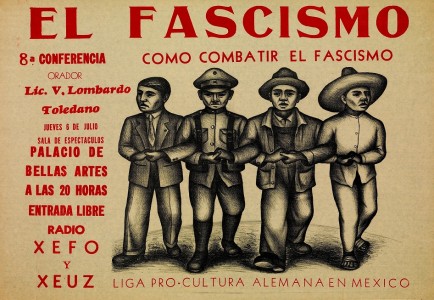
July 15, 2013, by Zoë Goodwin
Picturing politics: The Mexican Revolution
Picturing Politics, a blog produced by the School of Politics and International Relations at the University of Nottingham is host to a series of audio and video clips featuring academics commenting on the political significance of a diverse range of images.
The eighth post stars Dr Adam Morton examining a political poster from 1930s Mexico which was intended to emphasis the class unity of the Mexican Revolution.
Morton introduces the artwork used on the poster produced by a Mexican artist Jesús Escobedo entitled ‘Las clases’. The artwork contains four figures standing equally side by side and arm in arm – the bourgeois, the soldier, the proletarian and the campesino.
Morton points out that the ordering of these figures in terms of importance and priority is perhaps significant along with the inclusion of neither a female or indigenous character, which he suggests, is revealing in terms of assessing ‘Las clases’ as a representative image of Mexico’s post-revolutionary state and society.
In the 1930s, ‘Las clases’ was used on a political poster to combat the spread of fascism in Mexico and to disseminate anti-Nazi propaganda with an aim of projecting the unity of various class factions of the Mexican revolution.
Morton goes on to explain how the paradoxes of the Mexican revolution can be illustrated by Jesús Escobedo’s depiction of the post-revolutionary state and concludes by arguing how the poster also reveals a lot about the rise of the capitalist state. For Morton, this artwork is a window on the historical sociology and political economy of modern state formation in Mexico.
To hear his full explanation, listen to the clip here.
No comments yet, fill out a comment to be the first

Leave a Reply